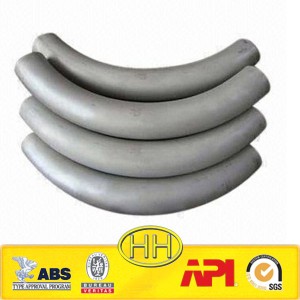It is crucial to calculate the bend for the start and end points. Currently, there are various pipe benders on the market, but they all share a common identification for the operation. The unit will bend along with a measurement called the “take up”. The take up measurement is used for adding or deducting an allowance in the overall length of the bend.
By following a basic process,you can calculate pipe bends regardless of the type of bend or the diameter of pipe.It is located on the pipe-bending shoe itself to identify the take up measurement.This is the addition or deduction of measurement to the length of pipe from the front mark on the bending shoe. Be aware that there is a second center-of-bend mark located approximately in the center of the bending shoe. Also located along the running length of the shoe are the angle markings with lines.These numbers and lines can be bent into the pipe by aligning the pipe with the angled line marked on the outside of the shoe. Bend a 90-degree angle on a ½-diameter pipe with a ½-inch bender.

The process remains consistent regardless of pipe or bender size, with the only variable being the take-up measurement. Please note that the ½-inch pipe may be identified on the shoe with the wording “stub take up 5 inches from arrow or line”. The 5 inches represents the amount to be deducted from the overall length of the 90-degree bend measurement. Please use the measuring tape and pencil to place a mark at 12 inches. From the end of the pipe, measure the distance from the bend to the end of the pipe. Using the deduction measurement on the shoe, measure back 5 inches from the 12-inch mark and make a solid pencil line. Lay the pipe on a level surface and insert it into the bender. The solid pencil mark should be placed 5 inches back from the 12-inch mark and aligned with the front mark or arrow on the bending shoe. Pull back on the handle in a smooth motion until the pipe is positioned at a 90-degree angle to the level surface.
The process will remain the same for different sized pipes and benders, but only the take up measurement will be different. Identified on the shoe for the ½-inch pipe may be the wording “stub take up 5 inches from arrow or line”.The 5 inches is the amount you will deduct from the overall length of the 90-degree bend measurement.Use the measuring tape and pencil and place a mark at 12 inches from the end of the pipe.This will be the distance from the bend to the end of the pipe.By using the deduction measurement on the shoe,measure back 5 inches from the 12-inch mark and make a solid pencil line.Lay the pipe on a level surface and insert the pipe into the bender.The solid pencil mark should be placed 5 inches back from the 12-inch mark and should be aligned with the front mark or arrow on the bending shoe.Pull back on the handle in a smooth motion until the pipe sits at a 90-degree position to the level surface.Place the small level against the upright portion of the pipe and check for level.This will give you a perfect 90-degree bend.Check the height of the overall bend by placing the end of the tape measure on the level base and measure the end of the pipe.It should read 12 inches exactly.We can practice with other angled bends by using the deduction measurement and the center of the bend mark on the shoe. But all tangent pipe benders may have their own quirks and slight measurement adjustments.







